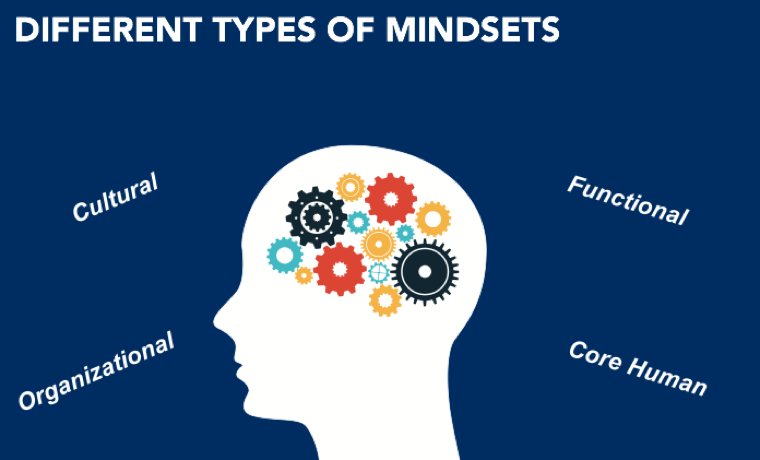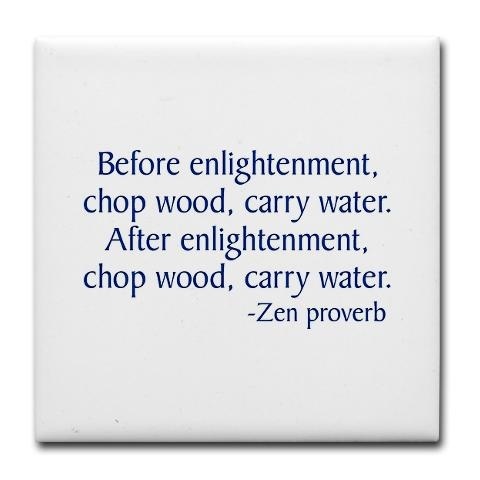by Fred Kofman
The unilateral control model
The world of American business operates under a set of mental models. Chris Argyris and Don Schön call it “Model I”; Diana Smith and Robert Putnam refer to it as the “unilateral control model.” This model has been the guiding philosophy that has shaped the code of acceptable behavior for American businesses. This model helped American businesses evolve to the level of sophistication and success it has reached in this century. But as we shall see, the unilateral control model may prevent American businesses from succeeding in the next century. The unilateral control model is fraught with inherent contradictions and weaknesses that hinder effectiveness, adaptability, innovation, competitiveness and profitability.
The unilateral control model is a theoretical construct, a story that allows us to explain behaviors. It is a convenient tool to summarize many observations of managers in action. Its value does not come from mirroring some “reality” in the outside world (or rather, in the inside of people’s heads) but from enabling us to understand and transform behaviors that do not help us accomplish our goals.
The unilateral control model is a way of maintaining control when dealing with issues that can be embarrassing or threatening. It is like a program that operates according to certain assumptions, strategic goals and tactical actions which result in certain consequences. Argyris and Schön identify several assumptions at the foundation of this model:
- I am rational; I see things as they are. I have a logical perspective that takes all factors into account.
- I am influenceable. I am open to change my opinions as long as someone can make a rational argument.
- Others are irrational and uninfluenceable. Unfortunately, most people are not rational like me, but
are closed‐minded and stuck in their (mistaken) ideas.
- Constraints are unalterable. People are the way they are and will not change.
- Errors are crimes to be punished or sins to be covered. If people do the right thing, bad things should not happen. Consequently, whenever something goes wrong, someone must have done something wrong.
These assumptions affect thoughts, feelings, actions and interactions. If I believe that rationality is paramount, I will measure every conversation, every action, every plan in relation to that premise. I will also feel awkward when someone displays emotion or relies on intuition. If I believe that others are uninfluenceable, I will not even try to convince them; or if I try and they still disagree, I will consider them hopelessly stubborn and try to bypass or outmaneuver them. These assumptions are so fundamental that they become invisible; if they are made visible, they are almost always undiscussable; and if they do become discussable, they will almost certainly remain unassailable.
After studying the behavior of thousands of managers, Argyris and Schön defined the following set of strategic goals at the core of the unilateral control model:
- Define goals and try to achieve them unilaterally. Do not waste time and energy trying to develop a mutual definition of purpose with others; do not allow them to influence or alter your perception of the task.
- Maximize winning (face‐saving) and minimize losing. Once you commit to your goals and strategies, assume that changing them would be a sign of weakness.
- Share information selectively to support your perspective. Assume that the only relevant information is that which helps you convince others you are right.
- Provide external incentives to ensure compliance. Distribute rewards and punishments to encourage individuals to do what you decide is best.
- Minimize generating or expressing negative feelings. Be rational, objective and intellectual. Suppress your feelings and do not become emotional.
These strategic goals give rise to several tactical actions characteristic of the unilateral control model:
- Design and manage the task and the process unilaterally. Own and control the task and the process by yourself.
- Unilaterally protect yourself and others by being abstract and withholding feelings. To protect others you should withhold information (especially negative assessments of their performance), tell white lies, suppress negative feelings and offer false sympathy.
- Assert your own views, taking your own reasoning for granted. State your conclusions as facts and withhold information on the data, reasoning and concerns that led you to such conclusions.
- Minimize inquiring into others’ views. If you must ask, ask leading questions that support your own position.
- Adopt the role of the victim, placing 100% responsibility for the problem on others. When a problem arises, assume that it is someone else’s fault. If your employees fail to take responsibility assume that it is their fault and “force” them into empowerment.
- Make dilemmas undiscussable, and make the undiscussability of dilemmas undiscussable. Resolve impasses and dilemmas unilaterally behind closed doors.
- Encourage face‐saving. Ignore or suppress conflict. Use abstractions and ambiguity to pretend that there is agreement when there is not. Assume that people would be hurt by confrontation and avoid it.
The way in which we have described the features of the unilateral control model makes them seem reprehensible, but they are not overtly so; in fact, they are often disguised as social virtues. In his book Overcoming Organizational Defenses, Argyris lists the following interpretation of the unilateral control model’s alleged social virtues:
- Help and support. Give approval and praise to others. Tell others what you believe will make them feel good about themselves.
- Respect for others. Defer to other people and do not confront their reasoning or actions. Assume that confrontation is always aggressive, disrespectful and unproductive.
- Strength. Advocate your position in order to win. Hold your position in the face of counter‐advocacy.
- Honesty. Tell other people white lies, or choose what truths to express. Express these truths “politely” so nobody feels upset. Alternatively, tell others all you think and feel in raw, unprocessed form.
- Integrity. Stick to your principles, values and beliefs. Hold on tightly to your “strong personal convictions.”
Because the unilateral control model incorporates face‐saving tactics, it does not appear to be as negative as it actually is. But when we look beyond its surface “politeness” we can discover its ugly undercurrents of game‐playing, one‐ upmanship and lack of consideration and respect for others. Argyris and Schön predict several major consequences of unilateral control behavior:
Because the unilateral control model incorporates face-saving tactics, it does not appear to be as negative as it actually is.
- People will behave in defensive, inconsistent, controlling and manipulative ways. They will be incongruent and fearful of being vulnerable. They will withhold many of their most important thoughts and feelings or “dump” them unproductively.
- Interpersonal and group relationships will become more defensive than facilitative. Group dynamics will become rigid and the focus will be more on winning and losing than on collaborating. There will be antagonism, mistrust, miscommunication, risk aversion, conformity, and compliance to external norms—as opposed to internally driven commitment.
- People will experience primarily fear, stress and anger. There will be a prevailing mood of cynicism, resignation and resentment. People will feel disempowered by their inability to control their destiny and respond with rebelliousness or apathy.
- There will be little freedom to explore and search for new information and new alternatives. Conformism, anomie and cynicism will ensue. Errors will escalate and people will withhold solutions that could challenge established beliefs and norms.
- There will be many constraints against exploring and defining goals in partnerships, exploring new paths to these goals and to setting realistic but challenging levels of aspiration. These constraints will lead to low commitment, group‐think, conservatism and risk‐ aversion.
- Theories will be tested primarily in private, with supporting data and arguments hidden, rather than displayed in public view. The secretiveness and vagueness of people’s models will lead to misunderstanding, miscommunication and escalation of errors.
- There will be a tendency to default to “within‐the‐box” thinking rather than to step beyond the commonly accepted assumptions.
Ultimately, the business consequences of the unilateral control model are simple and devastating: ineffectiveness, inflexibility, lack of innovation, low quality, high cost, uncompetitiveness, obsolescence, low (or negative) profitability and extinction.
The mutual learning model
We do not have to work and live in the ways we have described so far. As widespread as the unilateral control model is, there are other options. There is another mental model available to individuals, organizations, even whole cultures. This model not only increases effectiveness in the performance of the task; it also enhances the quality of relationships while raising individuals’ self‐esteem, satisfaction and happiness.
The mutual learning model (called “Model II” by Argyris and Schön) is based on very different assumptions and strategic goals than the unilateral control model. It generates different tactical actions and results in different consequences. The assumptions of this model are:
- I am a human being bound by my mental models. My logical inferences depend on my concerns, emotions, assumptions, generalizations and interpretations. My mental model filters my perceptions and conditions my emotions.
- Others’ thinking has an internal logic, although my mental models might make it hard for me to see it. Whatever position they hold, they have reasons for holding that position.
- We (others and I) are influencable. If we engage in a dialogue we can understand each other and learn together.
- Constraints are interpretations. From some points of view, constraints do not look as unalterable as from others. There is a wide space of negotiation within a context of personal disclosure and dialogue.
- Errors are puzzles to be explored. Breakdowns are opportunities to examine the process that generated them and learn to work together more effectively.
These assumptions, and this model, operate in an emotional space quite dissimilar to those of the unilateral control model. When people work within the mutual learning model, the prevailing emotions are peace, wonder and curiosity. In such a mood, it becomes possible to assume shared responsibility for a particular concern, to accept that others’ views can be as valid as my own and can help to solve the problem, and to believe that every problem or error— although upsetting and painful—is at the same time an opportunity to learn.
Based on these assumptions and emotions, these strategic goals guide actions in the mutual learning model:
- Develop a mutual definition of goals and pursue them collectively. Open the space of group negotiation to include both strategies and objectives.
- Maximize learning through the exchange of valid information. Provide others with directly observable data and grounded assessments so they can make valid interpretations on their own.
- Maximize free and informed choice. A choice is informed if it is based on relevant information. The more an individual is aware of the variables relevant to his decision, the more likely he is to make an informed choice.
- Maximize internal commitment. Encourage individuals to feel responsible for their choices. The individual is committed to an action because it is intrinsically satisfying—not, as in the case of the unilateral control model, because someone is rewarding or penalizing him.
- Accept all feelings as valid expressions of self. Invite discussion of emotionally charged issues in an atmosphere of mutual understanding and respect.
These strategic goals change the whole communication and decision‐making process from unilateral control to mutual learning. If I act after my voice has been included in the conversation, and because the course of action appears to me to be the best choice, my behavior will be very different than if my primary motivation is to protect myself, avoid your wrath, keep you or me from being embarrassed or pursue any of the strategic goals of the unilateral control model.
The strategic goals of the mutual learning model lead to the following tactical actions:
- Make the design and management of the task and the process a collective endeavor. Share control so that all participants experience free choice and internal commitment. Let participants participate in the definition of the goals and the design of the paths to the goals.
- Create a low‐protection, high‐learning environment. Advocate your own views and encourage others’ reactions. Actively solicit comments and challenges to your argument. Invite others to advocate their own views and inquire into them.
- Make the thinking behind your views explicit and publicly discussable. Expose your reasoning and your assumptions, your observations and your assessments. Assume that your point of view is not the only possible one and that others can understand your perspective and still disagree with you.
- Inquire into others’ views. Assume that others have valuable insights to offer and that only good can come from discussion.
- Take 100% ownership and responsibility for the problems. Assume that whenever there is a problem you are part of it (and its solution), that your behavior might
be affecting others and contributing to the ineffectiveness of the group.
- Make dilemmas discussable. When you reach an impasse or a dilemma, be willing to go beyond the surface—to discuss the context of the conversation as well as the content.
- Discourage face‐saving. When conflicts arise or emotions such as embarrassment and fear block effective decision‐ making, do not ignore them. Instead, make the emotions and conflicts explicit in the spirit of mutual learning: “What can we all learn from this to improve our task and relationships?”
The mutual learning model arises from a new understanding of traditional social virtues and has enormous consequences for both behavior and learning. When an organization operates in a mutual learning mode:
- People do not need to behave defensively or manipulatively. They act with congruence and without fear.
- Interpersonal and group relationships become less defensive and more facilitative. Group dynamics become flexible, shifting the focus from winning and losing to collaborating.
- People feel free to explore and search for new information and new alternatives. The team exhibits a drive to excel, high energy and excitement.
- People define goals and explore constraints in a partnership mode. They set what they consider realistic but challenging levels of aspiration through open communication.
- By encouraging public rather than private testing of theories, people detect and correct errors more easily and painlessly. Through enhanced communication people act in coordination and create high‐quality relationships based on integrity, commitment and dignity.
- People think creatively and explore solutions that step beyond commonly accepted ways of dealing with the problem.
Overall, the mutual learning model leads to effectiveness, flexibility, innovation, high quality, low cost, renewal, competitiveness, high profitability and growth.
The transition from unilateral control to mutual learning cannot happen through changes in formal policies and procedures. Changing mental models is a personal endeavor that demands the full participation of each individual. Creating a culture of openness and continuous improvement requires personal transformation. This transformation is the deepest level of learning.
Transforming mental models. Single, double, and triple‐loop learning
Given our assessment of a situation, we determine a range of possible actions. We then evaluate the expected results of these actions with our goals and choose an action that has the highest likelihood of attaining our desired outcome. This action creates consequences and produces results. In summary, as a result of our mental model, we articulate a story of “what is going on,” “what do I want,” and “what can I do,” this story conditions how we act, and how we act creates certain results.
If the results match our desires, we are satisfied and don’t experience the need to learn. But if the outcome disagrees with our wants or expectations, we have the opportunity to learn. The gap between our intention and the results fuels the learning process. Depending on the difficulty of closing the gap, learning will demand that we reconsider our actions, thoughts and feelings at different levels of depth.
Single‐loop learning is a process through which the learner becomes capable of acting effectively through detecting and correcting errors (mismatches between results and goals) by changing a specific response within a given set of alternatives. For example, a thermostat would activate a furnace when the temperature drops below a certain value. Single‐loop learning takes the situation as given. It solves the problem at hand by choosing an action within pre‐established bounds that attains a pre‐established goal. But single‐loop learning does not address a more basic question: why did this problem exist in the first place?
For example, suppose that a company implements a suggestion program as a way to reduce waste. Employees contribute ideas and soon waste decreases dramatically. From a single‐loop perspective this was a success. But some key questions remain unasked. These are the questions that nobody wants to ask for fear of spoiling the celebration. Why did the company need a suggestion program to implement the waste‐reduction initiatives? Why did workers and managers knowingly continue to do things that led to waste? What stopped those suggesting ideas through the program from presenting them before?
These are the difficult questions that rarely get asked when an initiative such as total quality management or business process re‐engineering succeed. The point is not to deny the improvements brought about by these programs: the point is to understand why the organization needed a special program to tap the creative potential of its employees. Double‐loop learning asks precisely these uncomfortable questions.
Double‐loop learning is a change in the process of single‐loop learning. Double‐loop learning is a process through which the learner becomes capable of accomplishing a goal, but this time his accomplishment does not come from a change in strategies within a given set of alternatives which are aimed to accomplish a given goal within a given environment. In double‐loop learning, the learner’s increased effectiveness comes from a change in the set of alternatives from which he selects his actions, from a change in the goals he is trying to accomplish or from a change in the way he interprets his environment. This change in frame or re‐contextualization opens new possibilities for action outside the range of single‐ loop learning.
When the company with the successful waste‐reduction program investigates the underlying structures that prevented improvements before, they might discover that those having ideas were afraid of contributing them because they would expose current inefficiencies. That exposure would be embarrassing for those in charge and that embarrassment might lead to retaliation. This is typical unilateral‐control thinking. If the current unilateral control model is not transformed, after the suggestion‐program party is over, inefficiencies will start accumulating again. Only through double‐loop learning will the company ensure efficiency in a dynamic environment.
In most circumstances, double‐loop learning will suffice to close the learning gap. But if it doesn’t, there is another step upstream that we can take. From the particular interpretation that we adopted, we can move to the mental model that conditions the interpretations we are able to construct.
Triple‐loop learning is a change in the process of double‐loop learning, or learning how to double‐loop learn. Triple‐loop learning is a change in the way the learner changes mental models. It is a release from the grip of any particular mental model within which we operate at any particular time.
Consequently, triple‐loop learning is a transformation that affects our notions of what is real and of who we are.
When we move into triple‐loop learning we begin to examine how these factors of biology, language, culture and personal history create a predisposition to interpret the world in particular ways. Instead of falling into a rut, I can challenge myself to change my behavior with mindfulness. The problem doesn’t go away, but I can frame the breakdown within a larger perspective.
Changing mental models is possible, but not easy. Mental models are not like eyeglasses that can be taken off and replaced easily. They are more like the cornea itself, whose shape conditions what shows up in focus and what does not. We find it difficult to change mental models because they are so “obvious” to us that they disappear, because they serve us well and because we so often identify ourselves with them. Some blocks to changing mental models include:
- Our reasoning and acting is highly skilled, so our mental models operate invisibly. We are not even aware that a particular mental model conditions our actions or thought processes.
- Our mental models filter out of our awareness those experiences that are incongruent with it. So we suppress experiences that can challenge our mental models without even knowing at a conscious level that we are doing it.
- We don’t want to risk losing face or being wrong since
that threatens our self‐image and produces embarrassment. So we cling to our established patterns even when they don’t work.
- We do not want to risk upsetting or embarrassing others. So we don’t reveal our mental models because we fear that they may represent a challenge to their mental models. Conversely, we expect others to hide their mental models when they could pose a risk to ours.
Once we see how powerful mental models are in shaping our reality and how subtly they prevent contradictions from surfacing to our consciousness, the critical question arises: if our structures and prior assumptions about reality determine what we can experience, how can we ever experience something that will challenge our structures and prior assumptions about reality? How can we ever learn to transcend some of the basic ideas that can block our progress when these are the very ideas that condition what we are able to think?
The answer is triple‐loop learning. We can escape the gravitational pull of our mental models through a leap to a different level of knowing, feeling, sensing and being.
An example of triple‐loop learning is what happens when we experience a “magical” event. An event is magical when it is both impossible and undeniable. Of course, “impossible” is an assessment that depends on our mental models. When confronted with undeniable evidence that the impossible is actually occurring, we need to change our definition of what is possible—and with it, our mental models. This is exactly what Kuhn describes as an “anomaly” in his book The Structure of Scientific Revolutions. When enough anomalies accumulate, the scientific community is forced to revise its collective mental model—what Kuhn calls “paradigm”.
Many of the tools we have introduced elsewhere, such as the ladder of inference, the distinction between private and public conversations, advocacy and inquiry, and observations and assessments are meant to respond to “anomalies.” When the world does not yield the results we desire, we can use them to shine a light of awareness on our mental models, go upstream in the interpretative process and change our paradigms to enable more effective actions.
Conclusion
Competitiveness has proven to be one of the most effective motivators to propel economic growth, but when applied inside of the organization through mental models like the unilateral control model, it can destroy the spirit and productivity of those involved.
The mutual learning model is based on cooperation: I may have some answers, but they are not the only ones. I want to know what you think because I respect your point of view and believe that we can get a better outcome if we work together and learn from each another.
Unfortunately, the shift to a mutual learning model is not easy. Most of us are experts in the unilateral control model because we grew up in a culture that reinforces and values that model. The mutual learning model, by contrast, is in a state of comparative nascence in our culture and most of us are beginners at using it. It will take much practice and perseverance to institutionalize this model, but this effort is worthwhile when compared with the inefficiency and suffering we are sure to experience if we continue to manage according to the unilateral control model.














